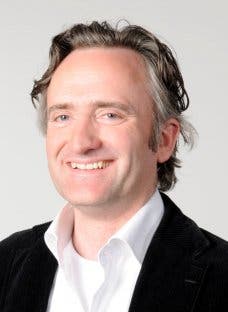Interview with Jan Veldink
Globalizing ALS research
"Making genetic and IT development work to improve treatment."

About 80 percent of all Dutch ALS patients come to Utrecht for treatment and care, and to participate in research. “It’s very important that patients are seen by an ALS team, wherever that may be. We pass our expertise on to the members of those teams.
Our patients, seen by my colleague Leonard van den Berg and me, know they’ll die within a few years. But they are often eager to participate in research projects, to better the chances for future patients.”
Possible treatments uitklapper, klik om te openen
“Technological developments go very fast, and especially genetic development has reached light speed. For example, creating induced pluripotent stem cells could become part of ALS treatment. Another contribution could be replacing repaired cells in our patients – once we’ve found the way to do so.”
Other developments Veldink relies on are those in information technology. Bioinformatics enables researchers to ‘reveal’ hidden patterns in large sets of biological data. Saving, analyzing and storing international data collected for the PAN study is done by an intricate computing system. “We’ve built a large server here, which not only enables other countries to submit data to PAN, but also provides massive storing space for data from biobanks all over the world.”
More than one discipline uitklapper, klik om te openen
“I knew I wanted to combine patient care and research quite early during my medical training, which brought me to Utrecht. The fun part of multidisciplinary work is that I have to keep speaking several different languages: chemistry, psychology, pharmacology, sociology, computer programming...
At the same time, this is the hard part of it: one can’t be the best in everything. Which is, deep down inside, of course exactly what I and those around me want to be.”
